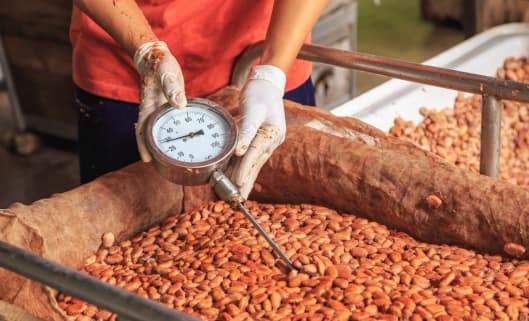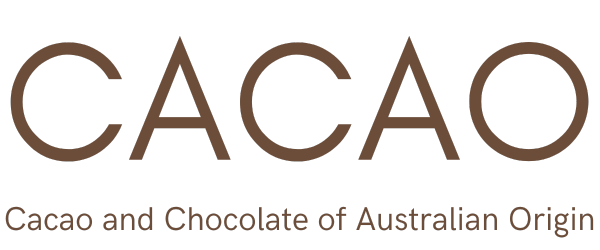Processing Cocoa
The process of converting cocoa beans into bulk chocolate is a complex and multi-step process that requires specialized knowledge, skills, and equipment.
Cocoa beans are the main ingredient for the production of high quality chocolate. The processing of cocoa beans involves several steps, which can be summarized as follows:
Harvesting

Cocoa pods are harvested from cocoa trees when they are ripe. The pods are then opened to reveal the cocoa beans inside.
Fermentation

The cocoa beans are removed from the pods and placed in piles or in fermentation boxes or trays. Fermentation is a crucial step that allows the flavor and aroma of the cocoa beans to develop. During fermentation, microorganisms break down the pulp surrounding the beans, which creates heat, and causes the beans to turn brown.
Drying

After fermentation, the cocoa beans are spread out to dry in the sun or in a drying room. This step is important for removing excess moisture from the beans and preventing mold growth.
Roasting

The dried cocoa beans are roasted to bring out their flavor and aroma. Roasting also helps to remove any remaining moisture and reduces the bitterness of the beans.
De Husking

The cocoa nib is separated from the cocoa husk
Grinding

The roasted cocoa nibs are ground into a paste called cocoa liquor or chocolate liquor. This takes up to 24 – 48 hours for a high quality liquor
Mixing

The cocoa liquor is mixed with other ingredients, such as sugar and milk, to make chocolate.
Tempering

The chocolate liquor is transferred to a temperer where it is heated to a specific temperature and then cooled, once gain to a very specific temperature. This stabilizes the chocolate and gives the finished chocolate its characteristic shiny appearance and smooth texture.
Molding

The tempered chocolate is then poured into molds and allowed to cool and harden. The molded chocolate is then packaged and shipped to customers.
Our Australia-Pacific Sustainability?

